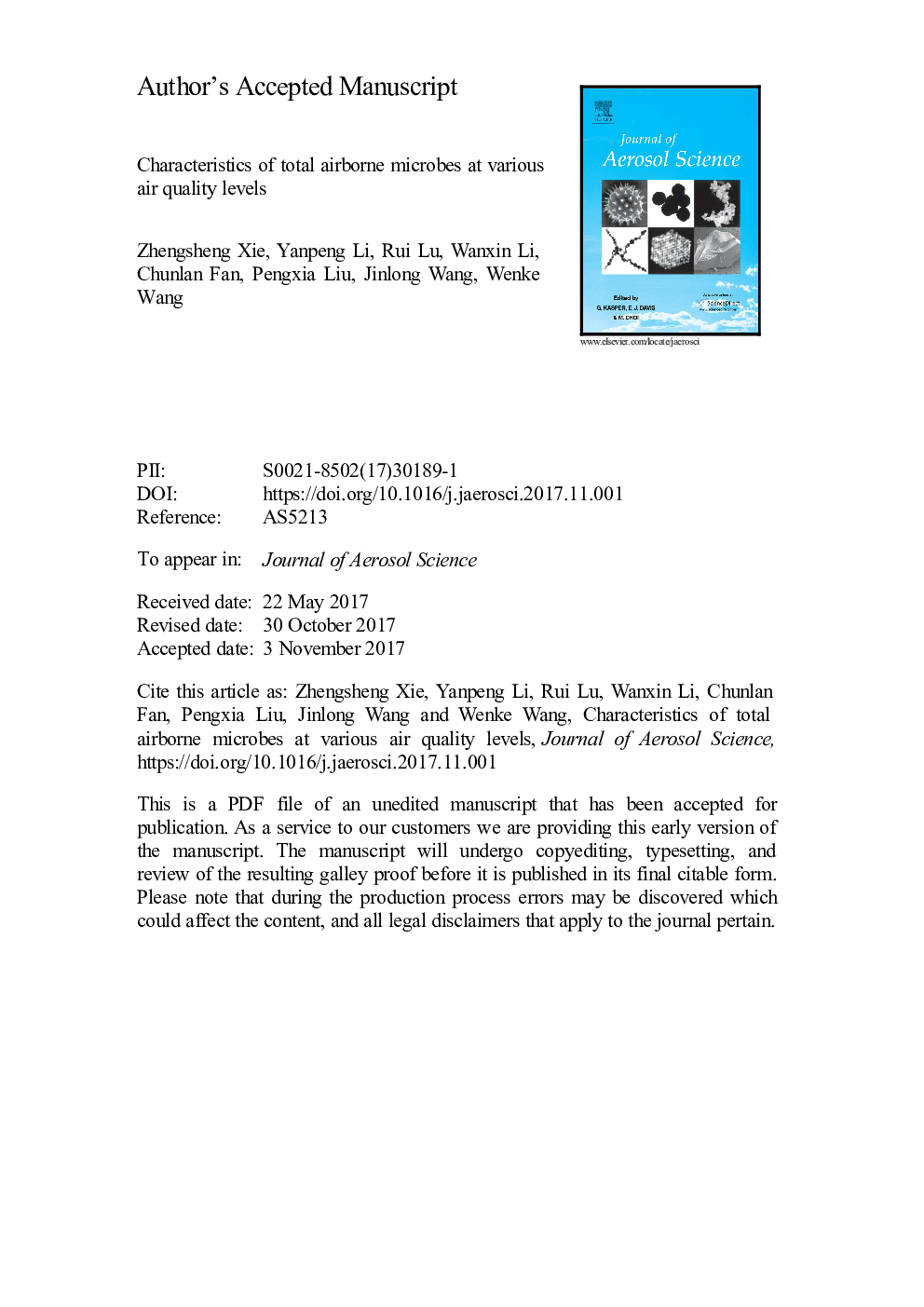| Article ID | Journal | Published Year | Pages | File Type |
|---|---|---|---|---|
| 8865314 | Journal of Aerosol Science | 2018 | 33 Pages |
Abstract
Bioaerosol significantly affect air quality and public health. However, limited information on bioaerosol at various levels of air quality over a long-term period has prevented our proper understanding of the possible threat to human health. In this study, airborne microbial samples were collected in Xi'an, China, from Apr. 2016 to Feb. 2017. The content of total airborne microbes (TAMs) was determined by fluorescent staining with DAPI (4â², 6-diamidino-2-phenylindole). A comparative investigation was emphatically conducted concerning the concentration of TAMs at various air quality levels. The results indicated that the concentration of TAMs showed significant seasonal variation. The concentration variation in different seasons followed the order of winter (6.77 à 105 cells/m3) > autumn (4.22 à 105 cells/m3) > spring (2.38 à 105 cells/m3) > summer (1.66 à 105 cells/m3). The mean concentration of TAMs on hazy days (6.12 à 105 ± 3.50 à 105 cells/m3) was significantly higher than that on non-hazy days (2.15 à 105 ± 1.26 à 105 cells/m3). Importantly, the concentration of TAMs increased firstly and then slightly decreased with the deterioration of air quality, and the maximum concentration was observed at moderate pollution level. The joint effect of meteorological and environmental factors was found to be an important influence mechanism on bioaerosol concentrations. Furthermore, snowfall was found capable of improving air quality by reducing concentration of TAMs. The present results will improve our understanding of effect of air pollution on airborne microbes.
Related Topics
Physical Sciences and Engineering
Earth and Planetary Sciences
Atmospheric Science
Authors
Zhengsheng Xie, Yanpeng Li, Rui Lu, Wanxin Li, Chunlan Fan, Pengxia Liu, Jinlong Wang, Wenke Wang,
